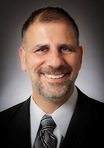Sam Gennawey's Blog, page 2
October 18, 2013
HOW THE COURT OF ANGELS GOT ITS NAME
One of the best things about Samland are the readers. You folks are great. I recently posted an article about the Court of Angels that used to be in Disneyland's New Orleans Square. One of my readers, Peggy Matthews Rose, contacted me with a very personal take on the courtyard. I could not help but share this wonderful story. So...
HOW THE COURT OF ANGELS GOT ITS NAMEBy Peggy Matthews Rose
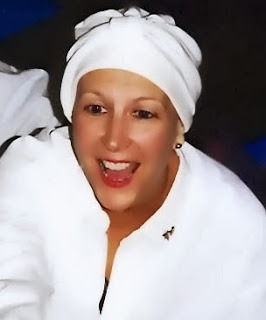 A year or maybe two afterwards, my role with Disneyland’s operations communications team took me to an offsite warehouse to see what Park Enhancement had in mind for “plussing” the Christmas decorations that year. It would be the first year of holiday overlay extending beyond the Main Street area and we wanted to know all about it.In one corner was a bevy of gold and white heavenly gorgeousness—what appeared to be an actual host of angels. “This will go in New Orleans Square, in the Court of Angels area,” said the designer who was giving us the tour. “I understand it was inspired by the lady whose plaque is on the wall.” He said “lady” but my mind heard: Sally. Had she really been gone so long that people had forgotten her? Few people I’ve ever met are more unforgettable.You couldn’t be in her presence without smiling, without a sense, however brief, that you’d been coated in an actual layer of pixie dust. Fair skinned with a bouncy blonde shoulder-length bob and a smile as big as the Disneyland Main Entrance, Sally had that rare ability to make you feel you were the most important person she’d met all day—whether you were the company president or the Cast Member who’d come in to pick up the trash. Her Disney instincts couldn’t have been sharper. She was a truly rare executive who understood that her medium was simply an element in a much larger and timeless message. Sally genuinely loved being around people and doing the simple things in life. She told me once that after playing with her kids, singing in her church choir and playing the guitar were her favorite activities. Born in Bethesda, Maryland, she’d been living and working as a retail executive in Indiana when the opportunity came to move Disney-ward in the mid-1990s. She quickly became Director of Store Operations at Disneyland.Although she worked with merchandise, the particular tools of Sally’s trade were the people rather than the products—and that’s where she excelled. She’d arrived on the scene during a time of growing pains, when long-time managers were suddenly being challenged by newcomers—managers who’d come from “outside the berm.” When she saw that getting them to work together was a little rough, Sally knew just what she was looking at: a classic Toy Story-style Buzz and Woody conflict. Her challenge, as she saw it, was getting the Woodys to shake hands with the Buzzes, and keeping the Buzzes from launching on the “old timers.”Right about this time, I’d re-hired into Disneyland and was working in Store Operations, after several years with The Disney Stores. Sally was looking for someone to edit her centerpiece Pixie Dust Press newsletter, and my background as a former Disneyland Line editor fit the bill. In that role, I had a front row seat for everything Sally was doing, and it was magic in action.It was the spring of 1996. Although pregnant with her third child, Sally never let it slow her down, even to the point of planning a Toy Story-themed offsite retreat for her staff. Her idea to get the Buzzes and Woodys playing together on the same stage and liking it came off flawlessly. Everything seemed new and full of great promise.But just like in every great story, there was this glitch. Shortly after baby Sam was born, the lingering cough Sally’d had for months was discovered to be a mass in her lungs—and the pregnancy had accelerated its growth. For the next year, Sally was in and out of the office, in and out of the hospital. She lost her hair, but she never lost her smile. There were valiant efforts and a massive outpouring of love from her staff and cast—including a platelet harvesting drive at the City of Hope and teams taking turns making meals for her family. By Thanksgiving 1997, she was home and cancer free. Sally was coming back!On the morning of December 9, we learned that Sally had succumbed in the night to a virus, having no immune system left to fight it. Corporate life can often seem cold, shallow, and unfeeling, but on that day—and for the next several weeks—there was a shared outpouring of grief such as I’d never experienced. I can only guess that it must have been similar, at least in our little corner of the kingdom, to the moment when the Disney Company learned that Walt was gone. We all did our best to put on a “happiest place on earth” face for our guests, but our collective hearts were broken. Over and over, we heard people say that Sally was now singing with the angels in heaven. Much to their credit, the company brought in grief counselors, gave people time to mourn, and reached out in some amazing ways to Sally’s family and friends. And that wasn’t all.Sally hadn’t been there long enough to be considered a legend or to earn a window on Main Street. What could we do to keep her from being forgotten, to honor her place in our lives and in Disneyland's legacy? There had to be a way. Six months later, the plaque that has since been seen by millions was mounted along the stairway leading up to Club 33’s backdoor in New Orleans Square. On a morning in July of 1998, just before Park opening, Disneyland executive Cynthia Harriss, a longtime friend of Sally’s, hosted an unveiling ceremony at the French Market—and all Sally’s family from Indiana had been flown in to celebrate with us.
A year or maybe two afterwards, my role with Disneyland’s operations communications team took me to an offsite warehouse to see what Park Enhancement had in mind for “plussing” the Christmas decorations that year. It would be the first year of holiday overlay extending beyond the Main Street area and we wanted to know all about it.In one corner was a bevy of gold and white heavenly gorgeousness—what appeared to be an actual host of angels. “This will go in New Orleans Square, in the Court of Angels area,” said the designer who was giving us the tour. “I understand it was inspired by the lady whose plaque is on the wall.” He said “lady” but my mind heard: Sally. Had she really been gone so long that people had forgotten her? Few people I’ve ever met are more unforgettable.You couldn’t be in her presence without smiling, without a sense, however brief, that you’d been coated in an actual layer of pixie dust. Fair skinned with a bouncy blonde shoulder-length bob and a smile as big as the Disneyland Main Entrance, Sally had that rare ability to make you feel you were the most important person she’d met all day—whether you were the company president or the Cast Member who’d come in to pick up the trash. Her Disney instincts couldn’t have been sharper. She was a truly rare executive who understood that her medium was simply an element in a much larger and timeless message. Sally genuinely loved being around people and doing the simple things in life. She told me once that after playing with her kids, singing in her church choir and playing the guitar were her favorite activities. Born in Bethesda, Maryland, she’d been living and working as a retail executive in Indiana when the opportunity came to move Disney-ward in the mid-1990s. She quickly became Director of Store Operations at Disneyland.Although she worked with merchandise, the particular tools of Sally’s trade were the people rather than the products—and that’s where she excelled. She’d arrived on the scene during a time of growing pains, when long-time managers were suddenly being challenged by newcomers—managers who’d come from “outside the berm.” When she saw that getting them to work together was a little rough, Sally knew just what she was looking at: a classic Toy Story-style Buzz and Woody conflict. Her challenge, as she saw it, was getting the Woodys to shake hands with the Buzzes, and keeping the Buzzes from launching on the “old timers.”Right about this time, I’d re-hired into Disneyland and was working in Store Operations, after several years with The Disney Stores. Sally was looking for someone to edit her centerpiece Pixie Dust Press newsletter, and my background as a former Disneyland Line editor fit the bill. In that role, I had a front row seat for everything Sally was doing, and it was magic in action.It was the spring of 1996. Although pregnant with her third child, Sally never let it slow her down, even to the point of planning a Toy Story-themed offsite retreat for her staff. Her idea to get the Buzzes and Woodys playing together on the same stage and liking it came off flawlessly. Everything seemed new and full of great promise.But just like in every great story, there was this glitch. Shortly after baby Sam was born, the lingering cough Sally’d had for months was discovered to be a mass in her lungs—and the pregnancy had accelerated its growth. For the next year, Sally was in and out of the office, in and out of the hospital. She lost her hair, but she never lost her smile. There were valiant efforts and a massive outpouring of love from her staff and cast—including a platelet harvesting drive at the City of Hope and teams taking turns making meals for her family. By Thanksgiving 1997, she was home and cancer free. Sally was coming back!On the morning of December 9, we learned that Sally had succumbed in the night to a virus, having no immune system left to fight it. Corporate life can often seem cold, shallow, and unfeeling, but on that day—and for the next several weeks—there was a shared outpouring of grief such as I’d never experienced. I can only guess that it must have been similar, at least in our little corner of the kingdom, to the moment when the Disney Company learned that Walt was gone. We all did our best to put on a “happiest place on earth” face for our guests, but our collective hearts were broken. Over and over, we heard people say that Sally was now singing with the angels in heaven. Much to their credit, the company brought in grief counselors, gave people time to mourn, and reached out in some amazing ways to Sally’s family and friends. And that wasn’t all.Sally hadn’t been there long enough to be considered a legend or to earn a window on Main Street. What could we do to keep her from being forgotten, to honor her place in our lives and in Disneyland's legacy? There had to be a way. Six months later, the plaque that has since been seen by millions was mounted along the stairway leading up to Club 33’s backdoor in New Orleans Square. On a morning in July of 1998, just before Park opening, Disneyland executive Cynthia Harriss, a longtime friend of Sally’s, hosted an unveiling ceremony at the French Market—and all Sally’s family from Indiana had been flown in to celebrate with us.
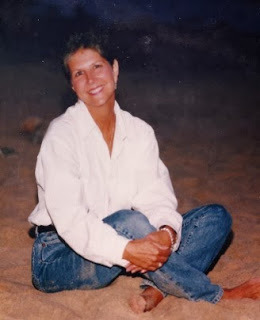 Always a popular photo spot, the place I remember calling the Royal Courtyard in my earlier Disneyland years would quickly become known by the other sign that was hung that day—the stained glass artwork signifying it as the Court des Anges, where daily vocal instruction is now delivered by a true Disney angel—Mademoiselle Sally McWhirter. While I can’t say with official Imagineer certainty that this was the first day the courtyard was called Court des Anges, it’s the day I clearly recall it taking on meaning. What will happen to Sally’s plaque, or the Court des Anges sign, as a result of the projected remodeling of Club 33 out into the courtyard area is not known at this writing, but at least Sally’s story has now been told. If you’ve visited the Court des Anges, had your picture taken there, enjoyed its peaceful retreat from the crowds, or ever wondered about that sign on the wall—maybe now you’ll have a face to put to the plaque. Sally was an amazing woman with true Disney spirit. In the few years that were given her, she did her best to be like Walt.
Always a popular photo spot, the place I remember calling the Royal Courtyard in my earlier Disneyland years would quickly become known by the other sign that was hung that day—the stained glass artwork signifying it as the Court des Anges, where daily vocal instruction is now delivered by a true Disney angel—Mademoiselle Sally McWhirter. While I can’t say with official Imagineer certainty that this was the first day the courtyard was called Court des Anges, it’s the day I clearly recall it taking on meaning. What will happen to Sally’s plaque, or the Court des Anges sign, as a result of the projected remodeling of Club 33 out into the courtyard area is not known at this writing, but at least Sally’s story has now been told. If you’ve visited the Court des Anges, had your picture taken there, enjoyed its peaceful retreat from the crowds, or ever wondered about that sign on the wall—maybe now you’ll have a face to put to the plaque. Sally was an amazing woman with true Disney spirit. In the few years that were given her, she did her best to be like Walt.
On Being Like Walt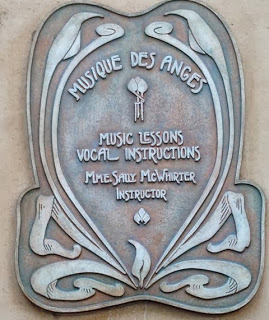 I first started working at Disneyland one year after Walt died, so I remember the feeling that hung in the air for many years after—that Walt was looking down on us and saying, “Go on—you can do it!” So when I met Sally, there was this sense of hope that another Walt-like spirit had come along. Over the years, I’d given up on a writing career, figuring I’d never learn to use a computer. But because Sally had faith in me, I not only learned to use a computer but within just a few years I was writing and editing books—books that are actually published! And there are many others with similar stories to tell, just like all those legends whose lives went places they’d never have imagined, all because Walt believed in them.Here are a few comments from people whose lives Sally touched: “On many occasions we met in the hallway or she would call me into her office as I passed by. Our conversations were not specific about work but about life in general. I loved Sally’s spirit and zest for life. I loved that when you were engaged in a conversation, she was really involved. Sally was the kind of person you looked forward to seeing.”“I barely met her and yet she left a strong and positive impression on me.”
I first started working at Disneyland one year after Walt died, so I remember the feeling that hung in the air for many years after—that Walt was looking down on us and saying, “Go on—you can do it!” So when I met Sally, there was this sense of hope that another Walt-like spirit had come along. Over the years, I’d given up on a writing career, figuring I’d never learn to use a computer. But because Sally had faith in me, I not only learned to use a computer but within just a few years I was writing and editing books—books that are actually published! And there are many others with similar stories to tell, just like all those legends whose lives went places they’d never have imagined, all because Walt believed in them.Here are a few comments from people whose lives Sally touched: “On many occasions we met in the hallway or she would call me into her office as I passed by. Our conversations were not specific about work but about life in general. I loved Sally’s spirit and zest for life. I loved that when you were engaged in a conversation, she was really involved. Sally was the kind of person you looked forward to seeing.”“I barely met her and yet she left a strong and positive impression on me.”
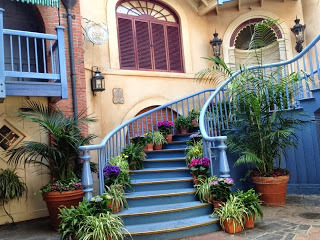 “I have been blessed to know Sally for many years and the special qualities that she so beautifully exemplified of love, kindness, generosity, fairness and concern for others have always been a part of her make up.”“Sally was one of the most inspirational managers I have known . . . Many times I have thought how exciting it would be to work for her.”“Sally did not know me, but I certainly knew her. She was a light that entered the room.”“I only recently got to know Sally by way of shared experience, but the fraternity of cancer patients can quickly create a very strong bond .... Her unique spirit has touched me and I am honored to call Sally my friend.”Perhaps best of all were the words in a letter to the merchandise team from their vice president, who concluded: “Sally has given each of us a unique gift. It is now our turn to give the gifts Sally has given to us to those whom we encounter. Sally is with us all. Listen for her spirit and look for her messages. She is a special bond we all share—we can bond together to nurture her spirit and touch the thousands who come to see us everyday.”I call that being like Walt, and Sally was.
“I have been blessed to know Sally for many years and the special qualities that she so beautifully exemplified of love, kindness, generosity, fairness and concern for others have always been a part of her make up.”“Sally was one of the most inspirational managers I have known . . . Many times I have thought how exciting it would be to work for her.”“Sally did not know me, but I certainly knew her. She was a light that entered the room.”“I only recently got to know Sally by way of shared experience, but the fraternity of cancer patients can quickly create a very strong bond .... Her unique spirit has touched me and I am honored to call Sally my friend.”Perhaps best of all were the words in a letter to the merchandise team from their vice president, who concluded: “Sally has given each of us a unique gift. It is now our turn to give the gifts Sally has given to us to those whom we encounter. Sally is with us all. Listen for her spirit and look for her messages. She is a special bond we all share—we can bond together to nurture her spirit and touch the thousands who come to see us everyday.”I call that being like Walt, and Sally was.
HOW THE COURT OF ANGELS GOT ITS NAMEBy Peggy Matthews Rose
 A year or maybe two afterwards, my role with Disneyland’s operations communications team took me to an offsite warehouse to see what Park Enhancement had in mind for “plussing” the Christmas decorations that year. It would be the first year of holiday overlay extending beyond the Main Street area and we wanted to know all about it.In one corner was a bevy of gold and white heavenly gorgeousness—what appeared to be an actual host of angels. “This will go in New Orleans Square, in the Court of Angels area,” said the designer who was giving us the tour. “I understand it was inspired by the lady whose plaque is on the wall.” He said “lady” but my mind heard: Sally. Had she really been gone so long that people had forgotten her? Few people I’ve ever met are more unforgettable.You couldn’t be in her presence without smiling, without a sense, however brief, that you’d been coated in an actual layer of pixie dust. Fair skinned with a bouncy blonde shoulder-length bob and a smile as big as the Disneyland Main Entrance, Sally had that rare ability to make you feel you were the most important person she’d met all day—whether you were the company president or the Cast Member who’d come in to pick up the trash. Her Disney instincts couldn’t have been sharper. She was a truly rare executive who understood that her medium was simply an element in a much larger and timeless message. Sally genuinely loved being around people and doing the simple things in life. She told me once that after playing with her kids, singing in her church choir and playing the guitar were her favorite activities. Born in Bethesda, Maryland, she’d been living and working as a retail executive in Indiana when the opportunity came to move Disney-ward in the mid-1990s. She quickly became Director of Store Operations at Disneyland.Although she worked with merchandise, the particular tools of Sally’s trade were the people rather than the products—and that’s where she excelled. She’d arrived on the scene during a time of growing pains, when long-time managers were suddenly being challenged by newcomers—managers who’d come from “outside the berm.” When she saw that getting them to work together was a little rough, Sally knew just what she was looking at: a classic Toy Story-style Buzz and Woody conflict. Her challenge, as she saw it, was getting the Woodys to shake hands with the Buzzes, and keeping the Buzzes from launching on the “old timers.”Right about this time, I’d re-hired into Disneyland and was working in Store Operations, after several years with The Disney Stores. Sally was looking for someone to edit her centerpiece Pixie Dust Press newsletter, and my background as a former Disneyland Line editor fit the bill. In that role, I had a front row seat for everything Sally was doing, and it was magic in action.It was the spring of 1996. Although pregnant with her third child, Sally never let it slow her down, even to the point of planning a Toy Story-themed offsite retreat for her staff. Her idea to get the Buzzes and Woodys playing together on the same stage and liking it came off flawlessly. Everything seemed new and full of great promise.But just like in every great story, there was this glitch. Shortly after baby Sam was born, the lingering cough Sally’d had for months was discovered to be a mass in her lungs—and the pregnancy had accelerated its growth. For the next year, Sally was in and out of the office, in and out of the hospital. She lost her hair, but she never lost her smile. There were valiant efforts and a massive outpouring of love from her staff and cast—including a platelet harvesting drive at the City of Hope and teams taking turns making meals for her family. By Thanksgiving 1997, she was home and cancer free. Sally was coming back!On the morning of December 9, we learned that Sally had succumbed in the night to a virus, having no immune system left to fight it. Corporate life can often seem cold, shallow, and unfeeling, but on that day—and for the next several weeks—there was a shared outpouring of grief such as I’d never experienced. I can only guess that it must have been similar, at least in our little corner of the kingdom, to the moment when the Disney Company learned that Walt was gone. We all did our best to put on a “happiest place on earth” face for our guests, but our collective hearts were broken. Over and over, we heard people say that Sally was now singing with the angels in heaven. Much to their credit, the company brought in grief counselors, gave people time to mourn, and reached out in some amazing ways to Sally’s family and friends. And that wasn’t all.Sally hadn’t been there long enough to be considered a legend or to earn a window on Main Street. What could we do to keep her from being forgotten, to honor her place in our lives and in Disneyland's legacy? There had to be a way. Six months later, the plaque that has since been seen by millions was mounted along the stairway leading up to Club 33’s backdoor in New Orleans Square. On a morning in July of 1998, just before Park opening, Disneyland executive Cynthia Harriss, a longtime friend of Sally’s, hosted an unveiling ceremony at the French Market—and all Sally’s family from Indiana had been flown in to celebrate with us.
A year or maybe two afterwards, my role with Disneyland’s operations communications team took me to an offsite warehouse to see what Park Enhancement had in mind for “plussing” the Christmas decorations that year. It would be the first year of holiday overlay extending beyond the Main Street area and we wanted to know all about it.In one corner was a bevy of gold and white heavenly gorgeousness—what appeared to be an actual host of angels. “This will go in New Orleans Square, in the Court of Angels area,” said the designer who was giving us the tour. “I understand it was inspired by the lady whose plaque is on the wall.” He said “lady” but my mind heard: Sally. Had she really been gone so long that people had forgotten her? Few people I’ve ever met are more unforgettable.You couldn’t be in her presence without smiling, without a sense, however brief, that you’d been coated in an actual layer of pixie dust. Fair skinned with a bouncy blonde shoulder-length bob and a smile as big as the Disneyland Main Entrance, Sally had that rare ability to make you feel you were the most important person she’d met all day—whether you were the company president or the Cast Member who’d come in to pick up the trash. Her Disney instincts couldn’t have been sharper. She was a truly rare executive who understood that her medium was simply an element in a much larger and timeless message. Sally genuinely loved being around people and doing the simple things in life. She told me once that after playing with her kids, singing in her church choir and playing the guitar were her favorite activities. Born in Bethesda, Maryland, she’d been living and working as a retail executive in Indiana when the opportunity came to move Disney-ward in the mid-1990s. She quickly became Director of Store Operations at Disneyland.Although she worked with merchandise, the particular tools of Sally’s trade were the people rather than the products—and that’s where she excelled. She’d arrived on the scene during a time of growing pains, when long-time managers were suddenly being challenged by newcomers—managers who’d come from “outside the berm.” When she saw that getting them to work together was a little rough, Sally knew just what she was looking at: a classic Toy Story-style Buzz and Woody conflict. Her challenge, as she saw it, was getting the Woodys to shake hands with the Buzzes, and keeping the Buzzes from launching on the “old timers.”Right about this time, I’d re-hired into Disneyland and was working in Store Operations, after several years with The Disney Stores. Sally was looking for someone to edit her centerpiece Pixie Dust Press newsletter, and my background as a former Disneyland Line editor fit the bill. In that role, I had a front row seat for everything Sally was doing, and it was magic in action.It was the spring of 1996. Although pregnant with her third child, Sally never let it slow her down, even to the point of planning a Toy Story-themed offsite retreat for her staff. Her idea to get the Buzzes and Woodys playing together on the same stage and liking it came off flawlessly. Everything seemed new and full of great promise.But just like in every great story, there was this glitch. Shortly after baby Sam was born, the lingering cough Sally’d had for months was discovered to be a mass in her lungs—and the pregnancy had accelerated its growth. For the next year, Sally was in and out of the office, in and out of the hospital. She lost her hair, but she never lost her smile. There were valiant efforts and a massive outpouring of love from her staff and cast—including a platelet harvesting drive at the City of Hope and teams taking turns making meals for her family. By Thanksgiving 1997, she was home and cancer free. Sally was coming back!On the morning of December 9, we learned that Sally had succumbed in the night to a virus, having no immune system left to fight it. Corporate life can often seem cold, shallow, and unfeeling, but on that day—and for the next several weeks—there was a shared outpouring of grief such as I’d never experienced. I can only guess that it must have been similar, at least in our little corner of the kingdom, to the moment when the Disney Company learned that Walt was gone. We all did our best to put on a “happiest place on earth” face for our guests, but our collective hearts were broken. Over and over, we heard people say that Sally was now singing with the angels in heaven. Much to their credit, the company brought in grief counselors, gave people time to mourn, and reached out in some amazing ways to Sally’s family and friends. And that wasn’t all.Sally hadn’t been there long enough to be considered a legend or to earn a window on Main Street. What could we do to keep her from being forgotten, to honor her place in our lives and in Disneyland's legacy? There had to be a way. Six months later, the plaque that has since been seen by millions was mounted along the stairway leading up to Club 33’s backdoor in New Orleans Square. On a morning in July of 1998, just before Park opening, Disneyland executive Cynthia Harriss, a longtime friend of Sally’s, hosted an unveiling ceremony at the French Market—and all Sally’s family from Indiana had been flown in to celebrate with us.
 Always a popular photo spot, the place I remember calling the Royal Courtyard in my earlier Disneyland years would quickly become known by the other sign that was hung that day—the stained glass artwork signifying it as the Court des Anges, where daily vocal instruction is now delivered by a true Disney angel—Mademoiselle Sally McWhirter. While I can’t say with official Imagineer certainty that this was the first day the courtyard was called Court des Anges, it’s the day I clearly recall it taking on meaning. What will happen to Sally’s plaque, or the Court des Anges sign, as a result of the projected remodeling of Club 33 out into the courtyard area is not known at this writing, but at least Sally’s story has now been told. If you’ve visited the Court des Anges, had your picture taken there, enjoyed its peaceful retreat from the crowds, or ever wondered about that sign on the wall—maybe now you’ll have a face to put to the plaque. Sally was an amazing woman with true Disney spirit. In the few years that were given her, she did her best to be like Walt.
Always a popular photo spot, the place I remember calling the Royal Courtyard in my earlier Disneyland years would quickly become known by the other sign that was hung that day—the stained glass artwork signifying it as the Court des Anges, where daily vocal instruction is now delivered by a true Disney angel—Mademoiselle Sally McWhirter. While I can’t say with official Imagineer certainty that this was the first day the courtyard was called Court des Anges, it’s the day I clearly recall it taking on meaning. What will happen to Sally’s plaque, or the Court des Anges sign, as a result of the projected remodeling of Club 33 out into the courtyard area is not known at this writing, but at least Sally’s story has now been told. If you’ve visited the Court des Anges, had your picture taken there, enjoyed its peaceful retreat from the crowds, or ever wondered about that sign on the wall—maybe now you’ll have a face to put to the plaque. Sally was an amazing woman with true Disney spirit. In the few years that were given her, she did her best to be like Walt.On Being Like Walt
 I first started working at Disneyland one year after Walt died, so I remember the feeling that hung in the air for many years after—that Walt was looking down on us and saying, “Go on—you can do it!” So when I met Sally, there was this sense of hope that another Walt-like spirit had come along. Over the years, I’d given up on a writing career, figuring I’d never learn to use a computer. But because Sally had faith in me, I not only learned to use a computer but within just a few years I was writing and editing books—books that are actually published! And there are many others with similar stories to tell, just like all those legends whose lives went places they’d never have imagined, all because Walt believed in them.Here are a few comments from people whose lives Sally touched: “On many occasions we met in the hallway or she would call me into her office as I passed by. Our conversations were not specific about work but about life in general. I loved Sally’s spirit and zest for life. I loved that when you were engaged in a conversation, she was really involved. Sally was the kind of person you looked forward to seeing.”“I barely met her and yet she left a strong and positive impression on me.”
I first started working at Disneyland one year after Walt died, so I remember the feeling that hung in the air for many years after—that Walt was looking down on us and saying, “Go on—you can do it!” So when I met Sally, there was this sense of hope that another Walt-like spirit had come along. Over the years, I’d given up on a writing career, figuring I’d never learn to use a computer. But because Sally had faith in me, I not only learned to use a computer but within just a few years I was writing and editing books—books that are actually published! And there are many others with similar stories to tell, just like all those legends whose lives went places they’d never have imagined, all because Walt believed in them.Here are a few comments from people whose lives Sally touched: “On many occasions we met in the hallway or she would call me into her office as I passed by. Our conversations were not specific about work but about life in general. I loved Sally’s spirit and zest for life. I loved that when you were engaged in a conversation, she was really involved. Sally was the kind of person you looked forward to seeing.”“I barely met her and yet she left a strong and positive impression on me.”
 “I have been blessed to know Sally for many years and the special qualities that she so beautifully exemplified of love, kindness, generosity, fairness and concern for others have always been a part of her make up.”“Sally was one of the most inspirational managers I have known . . . Many times I have thought how exciting it would be to work for her.”“Sally did not know me, but I certainly knew her. She was a light that entered the room.”“I only recently got to know Sally by way of shared experience, but the fraternity of cancer patients can quickly create a very strong bond .... Her unique spirit has touched me and I am honored to call Sally my friend.”Perhaps best of all were the words in a letter to the merchandise team from their vice president, who concluded: “Sally has given each of us a unique gift. It is now our turn to give the gifts Sally has given to us to those whom we encounter. Sally is with us all. Listen for her spirit and look for her messages. She is a special bond we all share—we can bond together to nurture her spirit and touch the thousands who come to see us everyday.”I call that being like Walt, and Sally was.
“I have been blessed to know Sally for many years and the special qualities that she so beautifully exemplified of love, kindness, generosity, fairness and concern for others have always been a part of her make up.”“Sally was one of the most inspirational managers I have known . . . Many times I have thought how exciting it would be to work for her.”“Sally did not know me, but I certainly knew her. She was a light that entered the room.”“I only recently got to know Sally by way of shared experience, but the fraternity of cancer patients can quickly create a very strong bond .... Her unique spirit has touched me and I am honored to call Sally my friend.”Perhaps best of all were the words in a letter to the merchandise team from their vice president, who concluded: “Sally has given each of us a unique gift. It is now our turn to give the gifts Sally has given to us to those whom we encounter. Sally is with us all. Listen for her spirit and look for her messages. She is a special bond we all share—we can bond together to nurture her spirit and touch the thousands who come to see us everyday.”I call that being like Walt, and Sally was.
Published on October 18, 2013 06:30
October 16, 2013
Celebration Flordia
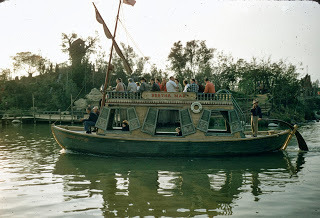 As Disney discovered years later when they developed the new town of Celebration, neighborhoods could be managed through homeowner ’s associations made up of private property owners. Since World War II, more than 200,000 property owner associations have been created nationwide. The associations are municipal governments by contract. These private organizations manage the town in such a way as to act like a private government; they have very strict and effective rules with regards to regulation of the public realm. When people move in they agree to live by a certain set of rules.It is tempting to believe that Celebration might reveal something to us about EPCOT. However, we can’t fully judge what life might have been like for EPCOT residents by looking at Celebration because it is a much different city than EPCOT. Much smaller than EPCOT and intended for “permanent” residents, Celebration began with 4,900 acres surrounded by 4,700 acres of protected greenbelts. Robert A.M. Stern and Cooper, Robertson & Partners designed the site plan. Although Disney does not agree with the label, many credit the town as one of the most visible examples of The New Urbanism or Traditional Neighborhood design.Celebration was not an effort to fulfill Walt’s dream; it was a result of pressure from the Bass Brothers, major stockholders in Disney during the early Eisner period, to squeeze more value out of the Florida property. Eisner hired an executive experienced in real estate, Peter Rummell, to come up with something that would be worthy of the Disney brand. Eisner was not completely sold on the project, but Rummell built a good case and was given the green light. The first residents moved to the city in 1996. Celebration is a small town that features a downtown designed by a collection of the world’s great architects, state-of-the-art public facilities, and a walkable urban core integrated with a residential community.
As Disney discovered years later when they developed the new town of Celebration, neighborhoods could be managed through homeowner ’s associations made up of private property owners. Since World War II, more than 200,000 property owner associations have been created nationwide. The associations are municipal governments by contract. These private organizations manage the town in such a way as to act like a private government; they have very strict and effective rules with regards to regulation of the public realm. When people move in they agree to live by a certain set of rules.It is tempting to believe that Celebration might reveal something to us about EPCOT. However, we can’t fully judge what life might have been like for EPCOT residents by looking at Celebration because it is a much different city than EPCOT. Much smaller than EPCOT and intended for “permanent” residents, Celebration began with 4,900 acres surrounded by 4,700 acres of protected greenbelts. Robert A.M. Stern and Cooper, Robertson & Partners designed the site plan. Although Disney does not agree with the label, many credit the town as one of the most visible examples of The New Urbanism or Traditional Neighborhood design.Celebration was not an effort to fulfill Walt’s dream; it was a result of pressure from the Bass Brothers, major stockholders in Disney during the early Eisner period, to squeeze more value out of the Florida property. Eisner hired an executive experienced in real estate, Peter Rummell, to come up with something that would be worthy of the Disney brand. Eisner was not completely sold on the project, but Rummell built a good case and was given the green light. The first residents moved to the city in 1996. Celebration is a small town that features a downtown designed by a collection of the world’s great architects, state-of-the-art public facilities, and a walkable urban core integrated with a residential community.As to the possibility that Eisner was finally fulfilling Walt’s dream of building a city, Rummell said, “That was press copy stuff. One of the things [Eisner] and I were concerned about was that people would draw out the comparisons.” But his boss disagreed—it was Eisner himself who made the comparison. In Work in Progress he said that the creation of Celebration was “to make good on Walt’s unrealized dream for a city of the future.”
Read more: Walt and the Promise of Progress City
Published on October 16, 2013 07:00
October 14, 2013
Book Review: DANNY KAYE: King of Jesters
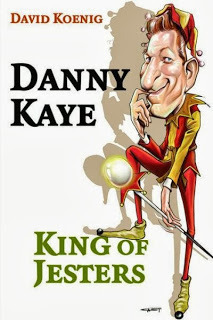 DANNY KAYE: King of JestersDavid Koenig2012
DANNY KAYE: King of JestersDavid Koenig2012303 pages
$27.95Bonaventure Press
I am a big, big fan of Danny Kaye. So the idea that somebody of David Koenig’s talent tried to capture his life in a biography was something that I had been looking forward to. I was not disappointed. David does an incredible job bringing to life this brilliant entertainer.
The book is a comprehensive review of Danny Kaye’s work. Every film, television show, audio recording, and cameos are documented in great detail. But it is Koenig’s sharp clear style that moves the story along. You learn of Danny Kaye’s complex personal and professional relationship with his wife Sylvia.
Of course, Danny Kaye has become part of the Disney theme park story as well. The Kraft Salutes Disneyland’s 25th Anniversary television program aired March 6, 1980 on CBS. He also hosted EPCOT Center: The Opening Celebration on NBC, which aired on October 23, 1982.
In the Disneyland show, Kaye portrayed fourteen different characters as he toured about the park. The show was such a success, Disney brought him back for the EPCOT Center grand opening show. According to Koenig, Kaye was upset that there were always tour groups milling about getting in the way and it was very, very hot. After the taping, Kaye was asked to return for the actual grand opening. He was very hesitant and was not a happy camper during the event. Disney executives vowed never to have Kaye work for the studio again.
Well written. Detailed without being overwhelming. After reading the book I just wanted to (and did) revisit many of Kaye’s film with a fresh pair of eyes. To that end, my awe for Kaye has not diminished.
I purchased the book from the author at a recent Disneyana sale.
Published on October 14, 2013 07:00
October 11, 2013
Universal Studios Hollywood 1997 Expansion Effort
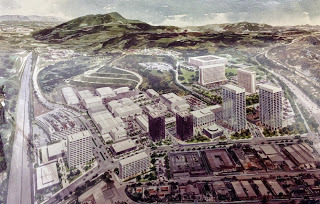 CityWalk had been in operation for three years by 1996 and Universal began considering an expansion. The shopping and entertainment center may have taken a critical beating but it was a hit with the public and good for Universal’s bottom line. “Universal City’s hilltop operates as one big mega theme park made up of three paid gates all supported and reinforced by a free entry festival marketplace," according to Buzz Price. "It is in the same genre as Harborplace in Baltimore which contains three paid gates (the aquarium, the science museum and IMAX, and the USS Constitution) operating in concert with a major festival marketplace. It is also in the same genre as Knott’s theme park with its festival market outside the gate.” The result was total attendance in 1995 for all venues over 15 million making it the 4th largest park in the US. Price called it a mega park.
CityWalk had been in operation for three years by 1996 and Universal began considering an expansion. The shopping and entertainment center may have taken a critical beating but it was a hit with the public and good for Universal’s bottom line. “Universal City’s hilltop operates as one big mega theme park made up of three paid gates all supported and reinforced by a free entry festival marketplace," according to Buzz Price. "It is in the same genre as Harborplace in Baltimore which contains three paid gates (the aquarium, the science museum and IMAX, and the USS Constitution) operating in concert with a major festival marketplace. It is also in the same genre as Knott’s theme park with its festival market outside the gate.” The result was total attendance in 1995 for all venues over 15 million making it the 4th largest park in the US. Price called it a mega park. The Studio Tour benefited with CityWalk. The number of locals crossing over and visiting the Studio Tour had increased dramatically. This change was vital to the long-term sustainability for the Studio Tour and would become the foundation for Universal Hollywood’s transformation from an industrial tour to a full fledge theme park.
CityWalk also brought new vitality to the Cineplex. Attendance skyrocketed now that is was not so isolated. In 1996, Price had recommended adding an IMAX large screen format theater, which would happen a few years later.
A 1996 study showed that demand far outstripped capacity. In fact, the study suggested Universal could double the size of CityWalk. If Universal built it, the public would come. Buzz Price said, “The demand for expansion is obviously there. It’s a slam-dunk.” Price noticed that the success of CityWalk meant, “The old battle between the tour people who thought that the Tour was the mother of all profits and the periphery development team was obsolete. It was one dynamic place, one of a kind." The study also suggested that Universal should take over many of the store leases to cut out the middle man and to operate the themed restaurants as joint ventures to maximize profits.
On July 12, 1996, Disneyland officials met with local leaders in the Disneyland Opera House to unveil plans for expansion their Anaheim property. As announced, the new Disneyland Resort would include Disney’s California Adventure—a 55-acre theme park—the 750-room Disney’s Grand Californian Hotel that would face into the park, and a 200,000 square-foot Disneyland Center shopping and entertainment district. The goal was to turn the area into a multiday tourist resort like Walt Disney World. Disney was growing increasingly concerned that the constant regional discounting and annual passes had started to turn the park into a regional theme park rather than a world-class destination.Not to be outdone, Universal announced expansion plans of its own on January 21, 1997 at a public hearing before the Los Angeles County Planning Commission. The meeting was held at the Universal Hilton Ballroom and the studio provided free food. A pro-development group called Universal City Tomorrow attended to balance out any neighborhood objections.
The twenty-five year plan was estimated to cost $2 billion and would create up to 13,000 permanent jobs. The plan outlined four development sites; the Studio District, the Business Center, the Entertainment district, and Greenscape district. Overall, the project would create almost 5.9 million square feet of new development.
Enhancements to the Studio and Business Center districts would include additional soundstages, post production studios, and office space. Many of those projects would be placed near Lankershim Boulevard. A new heliport was also part of the proposal.
New attractions would be added to the the Entertainment district including a new 750,000 square foot children's theme park. New water rides, lakes, and water features would be used to tie together the decorative elements. For example, four or five “family friendly” resort hotels totaling 2,000 rooms would be clustered around an expanded lake on the site of the Jaws shark. Up to eight hotels were proposed totaling 3,425 rooms. The signature hotel would be a 300 foot tower while the other hotels would adhere to strict height limits. In addition to the new hotels, up to thirty-six new bars and restaurants were part of the plans.
The Greenspace district included fifty-one acres along the edge of the Hollywood Knolls neighborhood was going to designated as open space and be heavily landscaped in order to create a buffer. Getting to Universal City would be made easier. A third new auto entrance would be opened at the intersection of Forest Lawn Drive and Barham Boulevard served by a beefed up freeway exchange on Highway 134. To handle all of those new cars, camouflaged parking structures were proposed.Iris Gelt of Universal said of the plans, “What we are doing is setting the outside parameters for what we can do.”
Jack Kyser, the influential chief economist for the Economic Development Corporation of Los Angeles County said, “They’re creating the first true overnight tourist designation in LA County. People tend to stay in Orange County or San Diego and make day trips up here. What it does is change the competitive balance of power.”
Not everybody was happy with the announcement. Richard Wulliger vice chairman of the Regional Planning Commission told Universal, “We don’t want to give you carte blanche on the one hand, or micro-manage [the project] on the other. I suggest you be prepared to come up with more specific plans than you have now.” Gerald Silver from the Encino Home Owners Association told the public officials, “We don’t want another Disneyland in our backyard. We don’t want a large work force of hot dog and hamburger salesmen [attracted by] a worldwide tourist attraction.” Another local resident, Wayne Brunette of Studio City quipped, “You may recall the objections to O’Malley’s Dodger Stadium. Universal is the Valley’s benevolent rich uncle ready to take a giant cultural step forward, and providing jobs, that would receive a warm welcome in 49 other states.” The quiet residential neighborhood of Toluca Lake adjacent to Universal City formed a residents association to combat the expansion plans. One of the early supporters of the organization was Roy E. Disney, a resident of the neighborhood.
In order to build support, Universal officials gave a two-hour tour of the property on February 4 to public officials, business leaders, and residents. One of the neighbors, Lisa Howard said, “I came away feeling more informed. It helped point out areas where they are going to put things.” However, it was not enough. Community opposition continued to grow.
By July 1997, Universal had Agreed to cut back its project by forty-four percent. The deal was brokered by Los Angeles County Supervisor Zev Yaroslavsky and City of Los Angeles Councilman John Ferraro who represented the local neighborhoods. Under the new proposal, Universal was to focus on expanding the studio and not on the theme park. The development area was reduced to 3.3 million square feet of office and production space, hotels and retail stores. The hotel room inventory was slashed from 3,425 rooms to only 1,200 rooms. The square footage for CityWalk was reduced by thirty percent. Even existing attractions would be impacted. One requirement was to reduce the noise of the Waterworld show or to eliminate it. The revised plan called for more community amenities such as a new public bike path and walkway on the northern edge of its property near a residential neighborhood and double the size of the Greenspace District to 300 feet on eastern side. The result of these reductions meant that only 8,000 new permanent jobs would be created. Universal attorney George Millstone conceded, "Universal has worked very hard to listen. Listening is sometimes very hard and painful. We think this reduced project is appropriate.” It was still not enough. Neighbor Patrick Garner said, “We don’t want Universal to expand their theme park at all.”
Published on October 11, 2013 06:00
October 10, 2013
The Court of Angels - MiceChat version
[image error]
The removal of the Court of Angels in New Orleans Square to make room for an expanded Club 33 has become the latest polarizing issue between traditionalists and those who are apathetic about change. How people view this little piece of construction says a lot about how they view the park in general.
Read more at MICECHAT
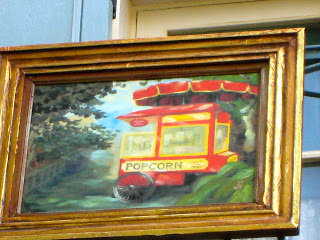
Published on October 10, 2013 15:35
October 9, 2013
An Early History of Universal Studios Florida CityWalk
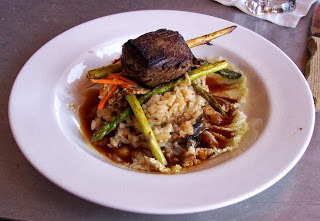 Just after the opening of Universal Studios Florida, the park's management began to develop a master plan for the Orlando property in 1991. The plan called for movie theaters, hotels, nighttime entertainment similar to what was proposed for Universal Studios Hollywood. Just like Hollywood, the shopping and entertainment center would be placed between the parking structures and the theme park entrance. Ron Benison said of the plans, "I think we know where we want to be in the next five to 10 years. We would like to see attractions in Europe and Japan, and we would like to see the buildup of our sites in Orlando and Hollywood.”
Just after the opening of Universal Studios Florida, the park's management began to develop a master plan for the Orlando property in 1991. The plan called for movie theaters, hotels, nighttime entertainment similar to what was proposed for Universal Studios Hollywood. Just like Hollywood, the shopping and entertainment center would be placed between the parking structures and the theme park entrance. Ron Benison said of the plans, "I think we know where we want to be in the next five to 10 years. We would like to see attractions in Europe and Japan, and we would like to see the buildup of our sites in Orlando and Hollywood.”On November 15, 1995, Universal announced plans to open the E-Zone, the east coast version of CityWalk. Buzz Price said of the project that the combination of the theme parks and the entertainment center “works like a slot machine” drawing people almost automatically. Ron Benison added, “I believe we have a formula, invented at CityWalk and improved here, that could work both domestically and internationally.”
Just prior to opening in late 1998, the name was changed to CityWalk just like Hollywood. The twelve-acre three-level Orlando entertainment and shopping center would stretch along a small lake with a plaza and an outdoor stage that offered views into Universal Studios Florida and Islands of Adventure. According to Ron Benison, the architecture for the would be “Floridan themed” with "a lot of water and lush landscaping and a lot of neon" plus Southern plant life, cuisine and music.
Unlike Walt Disney World's Pleasure Island, which opened in 1989, and the very popular Church Street Station in Downtown Orlando, CityWalk was not a gated attraction. Universal wanted to take advantage of its location near the Orange County convention center and its hotels. By the mid-1990s, the convention center was attracting approximately 15,000 meetings a year. Universal's Tom Williams said, "You’ve heard of the three most important things in real estate: location, location, location. This is that to the 10th power."
One of the biggest attractions was going to be Shaq’s Place, "a giant nightclub for a giant." The 31,000 square foot multilevel club would have a half court dance floor, a high tech game room, and a private VIP lounge. Basketball star and owner Shaquille O’Neal said, “The E-Zone is going to be a rock ‘n’ roll place. It’s going to be a rap place. It’s going to be a fun place.”
However, by October 1997 it was not to be. Plans for the Shaquille O’Neal restaurant collapsed and the space was handed over to musician Jimmy Buffett. The Orlando Margaritaville Cafe was the largest of the three-restaurant chain, with locations in Key West and New Orleans. Just outside was a replica of a Boeing 314 seaplane. Inside was a 20-foot wood sculpture of a whale and dolphin and a replica of the underside of the Key’s seven-mile bridge spanning one side of the main dining room. In tribute to the song 12-Volt Man, the back of the bar was covered in car batteries hooked up to blenders that served boat drinks. Every so often a 20-foot volcano would erupt and guests were encouraged to pin business cards and dollar bills on a 20-foot sail.
Two other major attractions that were announced but did not open include the Sega GameWorks mega-arcade would have covered 50,000 square feet on three levels and BB King’s Blues Club.When CityWalk opened in the fall of 1998 it would feature an eclectic mix of shops and restaurants. The center opened with thirteen restaurants and clubs with space for four more. To guarantee that the center would open with the correct mix of restaurants, Universal offered to partner in exchange for a share of the sales and profits. Irc Floral, vice president and general manager for CityWalk candidly said, “It was a way to get them to come here.”Jimmy Buffett’s Margaritaville Cafe was one of the restaurants. Others included the world's largest Hard Rock Cafe with a 2,000-seat auditorium, the NASCAR Cafe themed to the popular auto racing series, and the Motown Cafe.
The two-story 400-seat Motown Cafe was filled with memorabilia including a thirty foot tall replica of the Jackson Five’s early hit record ABC and featured their own in-house band called the Motown Cafe Moments. Out front was a 15-story radio tower.
Celebrity chef Emeril Lagasse opened a recreation of his original restaurant in the warehouse district in New Orleans. On display were 12,000 bottles of vintage wine stretching 50 feet across the second floor. There was also an eight person cigar room. Pat O’Brien’s Irish Bar is another New Orleans import. The Universal design team took thousands of photos of the original in New Orleans in order to recreate the exterior and the patio in the back. Like the original, the patio had the signature fire and water fountain installed. Inside visitors would find two bars, including one with dueling pianos, and Pat O’Brien’s famous Hurricane drink.
Next door was Bob Marley - A Tribute to Freedom. The nighclub was patterned after the reggae star’s home in Kingston, Jamaica, which was converted into a museum after the reggae star died in 1981. Jazz fans could visit CityJazz, which was decorated in a mix of natural wood with purple and green decor. A montage of jazz stars filled one wall while glass cases showcased jazz memorabilia.
Nearby was the Latin Quarter. The $10 million, 20,000 square foot restaurant featured “Nuevo Latino” cuisine. The architecture reflected the passing of time as guests go from Spanish colonial architecture to Mayan, Aztec and then Incan. Inside was a replica of the Andes Mountains complete with a waterfall and a jungle stream surrounding the dance floor. The Groove was another dance club that looked like a turn-of-the century theater that was converted into a nightclub. The decor suggested that movie screen had been replaced by a two-story wall of video monitors and spotlights. Throughout the club were small lounges and intimate spaces.
On the other side of the lake was NBA City, a joint venture between the National Basketball Association and the Hard Rock Cafe. The facility was the first of a proposed chain of ten restaurants. Even the retail stores got special attention. For example, Cigarz’s interior was a replica of a 1920 cigar drying barn with lumber from an 1860s New England barn. For the locals there would be a 16-screen Cineplex Odeon movie theater.
Like the rest of Universal Studios Escape, CityWalk was struggling in 2000. The Orlando Business Journal reported that the center was “off to a slow start with sales well below expectations.” Geoffrey Weller of the Latin Quarter nightclub stated, “Are we where we thought we would be? Probably not. We had some pretty high expectations.”
Just like Hollywood the secret of success would be to target the locals. Starting in January 2000, Universal eliminated the parking fee after 6:00 p.m. The result was traffic doubled. The impact was felt at both Disney’s Pleasure Island and Church Street Station. CityWalk was starting to become the locals hangout. Chris Havlicek of NBA City said, “When they dropped the parking fees, they said they wanted to get the locals to come.” They were right.
Published on October 09, 2013 07:00
October 7, 2013
The Miami Vice Action Spectacular
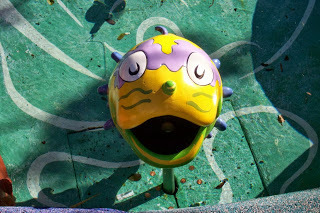 When the A-Team television show was cancelled in 1987, Universal scrambled to develop a replacement stunt show. Not content to merely duplicate the earlier successful show, Universal choose to be ambitious in both scope and speed of implementation. The 15-minute Miami Vice Action Spectacular cost $5.4 million and was put together from start to finish in a remarkable six months. The massive set looked like a West Indies smugglers' hide-out. A lagoon large was built that was large enough to allow for a speedboat to race through a simulated mine field. The show began with a raid on the hide-out by Miami detectives Sonny Crockett and Ricardo Tubbs (portrayed by stunt men look-alikes for actors Don Johnson and Philip Michael Thomas). The action sequence was stopped by an on-set director who explains what is going on and guides the six cast members through their paces. The show was loaded with over fifty high-tech special effects and plenty of pyrotechnics . To ensure the safety of the cast and audience, many of the effects were enabled by fail-safe triggers and computer backups. Phil Hettema, the show's producer said, "You don't need this advanced technology for film and television. In film you only do it once and use five cameras to make sure you get it."Highlights included Crockett and Tubbs bursting out of a building, guns blazing, riding a roller coaster dressed as a mine car and the use of a hovercraft. The climax included an aerial attack from a helicopter that rises from behind the set and is shot down by the detectives. The full-scale mock-up was mounted on a mechanical arm that gave the appearance of hovering in mid-air.
When the A-Team television show was cancelled in 1987, Universal scrambled to develop a replacement stunt show. Not content to merely duplicate the earlier successful show, Universal choose to be ambitious in both scope and speed of implementation. The 15-minute Miami Vice Action Spectacular cost $5.4 million and was put together from start to finish in a remarkable six months. The massive set looked like a West Indies smugglers' hide-out. A lagoon large was built that was large enough to allow for a speedboat to race through a simulated mine field. The show began with a raid on the hide-out by Miami detectives Sonny Crockett and Ricardo Tubbs (portrayed by stunt men look-alikes for actors Don Johnson and Philip Michael Thomas). The action sequence was stopped by an on-set director who explains what is going on and guides the six cast members through their paces. The show was loaded with over fifty high-tech special effects and plenty of pyrotechnics . To ensure the safety of the cast and audience, many of the effects were enabled by fail-safe triggers and computer backups. Phil Hettema, the show's producer said, "You don't need this advanced technology for film and television. In film you only do it once and use five cameras to make sure you get it."Highlights included Crockett and Tubbs bursting out of a building, guns blazing, riding a roller coaster dressed as a mine car and the use of a hovercraft. The climax included an aerial attack from a helicopter that rises from behind the set and is shot down by the detectives. The full-scale mock-up was mounted on a mechanical arm that gave the appearance of hovering in mid-air.
Published on October 07, 2013 04:00
October 4, 2013
Book Review: NEW MEDIA FOR DESIGNERS + BUILDERS
 NEW MEDIA FOR DESIGNERS + BUILDERSStephen A. Mouzon2013
NEW MEDIA FOR DESIGNERS + BUILDERSStephen A. Mouzon2013The Guild e-Book only
If you work in the architecture, engineering or urban planning trades, you realize that the past few years have been miserable. In fact, according to the author more than half of the people working in the field in 2005 have left to work in other industries. With the industry devastated and the world around it changing, Mouzon has come up with a formula on how we professionals should communicate with one another, how to partner on projects, how to market ourselves. It is a very compelling message.
Mouzon says of the industry, “We’re not selling widgets online; our business is more bricks and mortar than clicks and orders.” However, that does not stop him from reviewing the entire array of communications technologies. He cautions, “Today, nobody wants to be treated like a military target. And we don’t want to be talked to...we want to have a conversation.” That is because we are in “the Age of the Idea.” To succeed in this business, the author suggests that your firm’s prime virtues have to be patience, generosity, and connectedness.
For older geezers like myself, it is a straight forward inventory of the tools available, their features, advantages, and benefits. Mouzon takes advantage of the e-Book format with links and discussion boards. Major points are presented in red font for a quick read. The book is meant to be updated frequently.
Is the book relevant to people outside the industry? I think so. I think that anybody who sells ideas for a living will find a great deal of value from the book. Those who are trying to sort through all of the tools to see which ones make sense for them will find the book very helpful. I was so inspired I have started to use my own personal blog (Samland’s Disney Adventures) differently.
I received a pre-publication version of e-book for free in exchange for the purpose of this review.
Published on October 04, 2013 07:00
October 2, 2013
Starbucks on Main Street
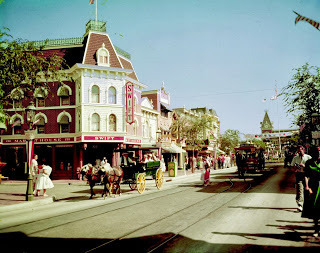 Starbucks on Main Street
Starbucks on Main StreetIt seems that everybody has an opinion on the inclusion of a Starbucks on Main Street USA at Disneyland. Went to the park this week and was inspired to toss my two cents into wishing well.First a disclaimer. I don't drink coffee. Never liked the stuff. Give me a Diet Coke in the morning and I am a happy guy. Therefore, I cannot comment on whether the coffee is a step up or down from what was served before. I did like the idea that you could get refills all day. I suspect that Starbucks is not so generous. Walt Disney’s version of Disneyland was meant to be large set pieces that represented the various movie and television genres of the day. He invited his guests to become the characters and to play. That was part of the magic of Disneyland and it was the start the theme park industry. His Imagineers created spaces that people wanted to be, regardless of whether they were going on rides. It was not only an aesthetic consideration. It was financial. At the time, you could buy a general admission ticket, buy tickets for individual attractions, buy souvenirs, and food. If you wanted to make the most money you want a lot of people standing in lines, a lot of people eating, and the rest milling about, hopefully in the shops. You needed a lot of people just to sit around. That is why many older Disneyland fans from Southern California seem to have this weird connection to the park. It was a park. What does this have to do with Starbucks? I believe that the coffee house is beautifully designed and decorated. It is function over form, which was the priority. It is not really themed but it is an attractive retail space using a an overlay of historic items designed to maximize revenues. Just like your local Cracker Barrel. The original Market House was built around the heart of the Main Street USA community - the pot belly stove. Want to have a relaxed chat with a neighbor? Play checkers. Need more local news? Pick up the party line phone. The Market House was like the Upjohn Pharmacy across the street. They were less stores and more like museums. There real function was supposed to help to reinforce the illusion that you were some place from another time. Am I overthinking this? Maybe. But architect Charles Moore, a fan of Disneyland when most professionals held the park in contempt, said, "Place is the projection of the image of civilization onto the environment." What may be a vacant lot to some can be a holy space to others.With the rise of Paul Pressler and his successors, the thinking about space had changed and everything was judge by how much money can be made per square foot. After all, management schools teach us that you can only manage what you can measure. Maximizing square footage is the thinking of a shopping mall manager. Pressler may be long gone but his approach continues to drive the park's design. If there are exceptions please highlight them in the comments. I applaud the Imagineers for retaining three signature elements; the pot belly stove, the impromptu checker board game on a barrel, and the party line phones. The stove has been placed in a new space called the Book Rest. Nice space. The stove is no longer the center of attention. It is tucked oddly in a dark corner. The queue for coffee is the new focus. The history geek in me notes that Walt personally made miniature versions of pot belly stoves and sold them.
I typed this article while sitting on a nice little bench at a table toward the back of the Book Rest. I think it is supposed to be a bookstore (Mr. Peavidy, Bookseller) but I am not sure. It feels like a library. It is nicely decorated with period books and artifacts. I think it may turn out to be a a great “Hey I will meet you at...” spot. Instead of the checkers board near the stove, they have been separated. The protective little railing that surrounded the stove and game board is long gone. That sense of security while playing a game is gone. But who plays checkers, right? Since everything at WDI is about story, I am sure that there is a very eloquent back story that supports what the guests see. Just like the Carnation Cafe has nothing to do with the ice cream company and has to do with a guy’s wife. I look forward to the Disney Parks blog revealing that story or if somebody with a press release can send it my way, I will highlight it in a future column. I could get really picky. Just look at the roof. The air conditioning vents are pretending to be structural beams but it is obvious that this is a modern air conditioning system cover by a fake wood veneer. Next time you are at the park look up at the ceilings of the older stores and you will see what I mean.
Don't get me wrong. Disney and Starbucks are going to make a lot of money. Coffee fans have a real alternative (I know how crazy some of you get before your first cup). It is hard to imagine how they could accomplish the goal of moving hundreds of people through a space while retaining any sense of charm. Today's Disneyland is not Walt's park. But look for me typing away at the Book Rest the next time you visit....
Published on October 02, 2013 06:00
October 1, 2013
Why the Court of Angels in New Orleans Square Matters
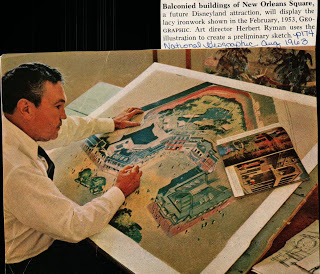 This is a little bit from
The Disneyland Story: An Unofficial Guide
This is a little bit from
The Disneyland Story: An Unofficial Guide
Another addition to Frontierland was not so obvious. One of the things Walt loved to do was to add little surprises throughout the park that guests could stumble upon. They were known as interstitials, events between the major events. One example was the petrified tree in Frontierland.
In July 1956, Walt and Lillian had driven through Colorado, near Pike’s Peak, just outside of Colorado Springs. Walt saw a “Petrified Trees for Sale” at Pike’s Petrified Forest. He pulled in and told Lillian to wait in the car. She was not happy with the detour and was starting to get agitated. When her husband returned, he proudly proclaimed that he had just bought her anniversary present; a petrified tree stump. The 5-ton stump was still in Colorado on their 31st anniversary on July 13, 1956. When she said that it was too big for the mantle, Walt brought it down to Disneyland. On Walt and Lillian’s 32nd anniversary, July 13, 1957, the 10-foot tree stump was installed next to the Rivers of America.
Published on October 01, 2013 07:00

